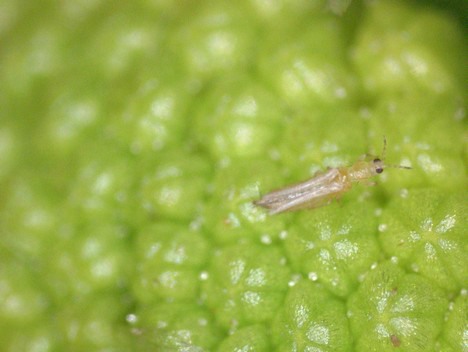It's hard to believe, but as the first snow hits the ground here in Niagara, that means it's time to think about spring crops again; write Dr. Chevonne Dayboll and Dr. Sarah Jandricic in their blog.
This post gathers some of the most important things to plan and prep for in the greenhouse, including ordering inputs, preventative maintenance, and your pest management and PGR plans!
Think of this post as your "to-do" checklist for the month of December, as the time to plan all this is NOW before your spring production begins.
We've also linked to some helpful videos we've recorded from our GrowON webinar series that are relevant to spring crops. They're worth a re-watch – or a first watch – if you haven't seen them before.

Spring crop checklist:
1. Make sure all your inputs are ordered
We can't emphasize this one enough. Supply chain issues are still causing product shortages and shipping delays that are affecting many industries, including greenhouses. Make sure you order potting mixes, plastic trays and pots, fertilizers, and production inputs well ahead of when you will need them. Consider ordering your summer and fall crops as well and storing the materials if you can. And, if you are planning on doing greenhouse upgrades in between seasons, make sure you confirm delivery and installation timelines with your contractors. Many of them are facing delays too.
2. Get your preventative maintenance done
Now is a great time to schedule preventive maintenance for your boiler, irrigation, and shading systems. Make sure that all motors and alarms are working before you need to rely on them. No one wants to find out that their temperature alarm failed on a cold February morning! Ensure you are getting the pressure you expect all along your irrigation system. If you rely on propane heaters for early spring production, make sure they are venting properly. Damage from improper venting can present as stunted growth or leaf burn.
Take some time to inspect the greenhouse for wear and tear. Repair cracked poly and broken glass to keep heat from escaping. Make sure old torn energy curtains are replaced. A heat-sensitive camera can help to identify areas of energy loss and help you plan for energy-efficient upgrades in the future.
3. Sanitize NOW, THEN plan your disease management program
Several key spring crops, like Calibrachoa, Pansy, and Petunia, are highly susceptible to black root rot (Thelaiviopsis), and we've seen more Fusarium pop up in the last few years on crops like salvia, gerbera, echinacea, and lavender. These pathogens are everywhere in the environment and can easily be brought in by insects like fungus gnats and shore flies, on workers' boots, or via equipment.
More importantly, spores of these diseases can hide in nooks and crannies of benches while less-susceptible crops are growing, then pounce when conditions are right. So take advantage of the period in December when your benches are empty, and make sure to give everything a good cleaning!
Sanitizing now to prevent headaches later:
Once black root rot or Fusarium get hold, it can be almost impossible to control them with fungicides (AND we only have two registered for them!). When it comes to these diseases, a good clean out of your spring crop propagation and growing areas is as close to a "silver bullet" solution as we are going to get. This includes:
- Scrub down your benches. This removes all the soil particles etc., where fungal spores might be hiding. It also allows sanitizers to work better since they can get trapped by organic matter. Use a hose, scrub brush, and a product like Strip-It to make sure everything is as clean as possible.
- Sanitize benches AND drip lines, where organic matter, biofilm, and disease spores can accumulate. Use peroxide (Virkon) or quaternary ammonium (KleenGro) products at the recommended rates for the material you're sanitizing. If cleaning drip lines, make sure to always thoroughly flush your watering system several times before plants go in to prevent any potential phytotoxicity.
- Use new plug trays. This may be more costly, but it's something you'll wish you did if you develop a problem. Pot/tray cleaners aren't perfect, and trays can act as a ready source of inoculum for resting spores. If you are cleaning your trays, use the same process as for benches; first clean, then sanitize!
- Control fungus gnats and shore flies, as they can spread disease spores. Fungus gnat larvae can also chew on plant roots, making them more susceptible to disease.
Read the complete blog at www.onfloriculture.com.
